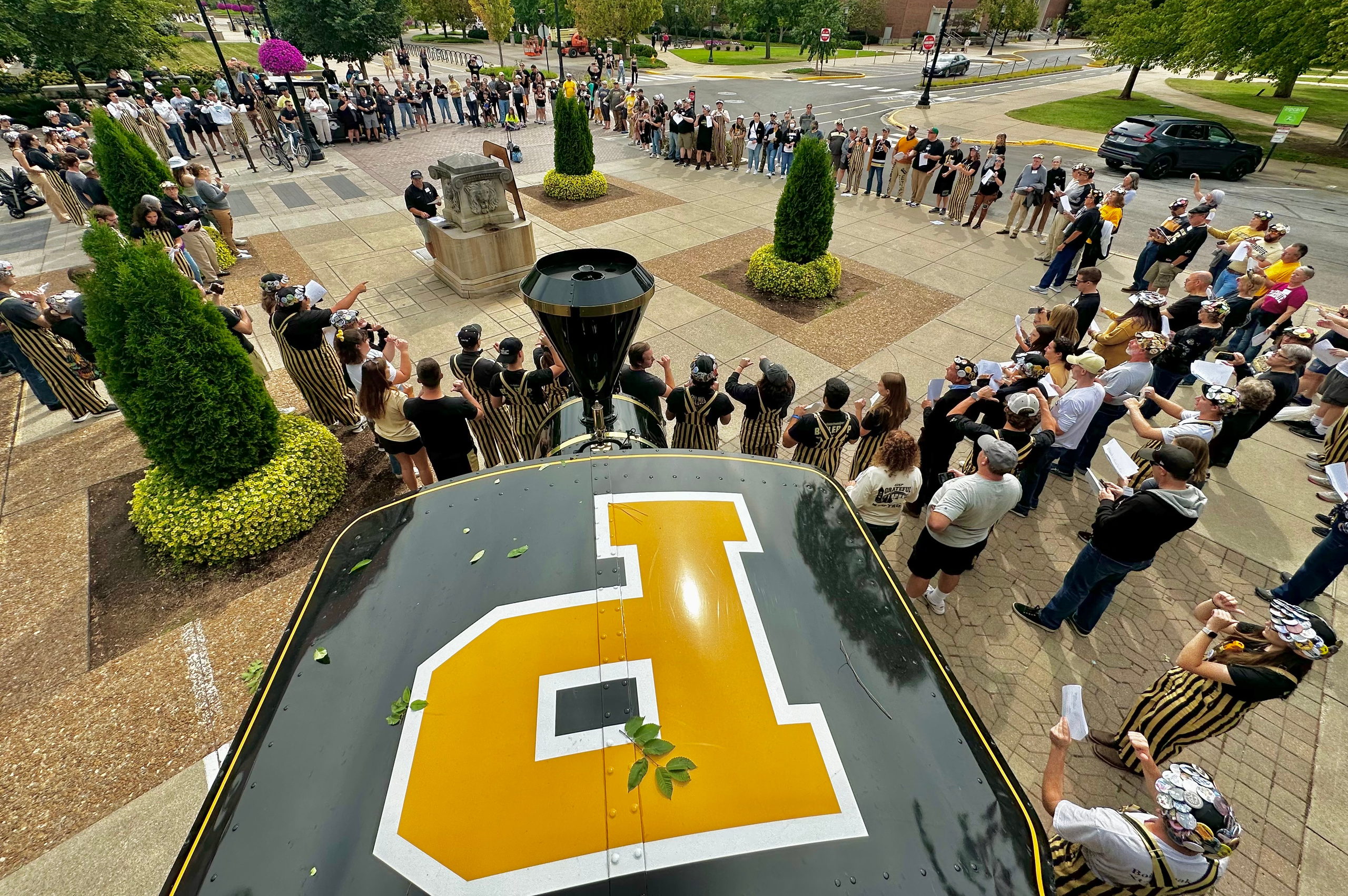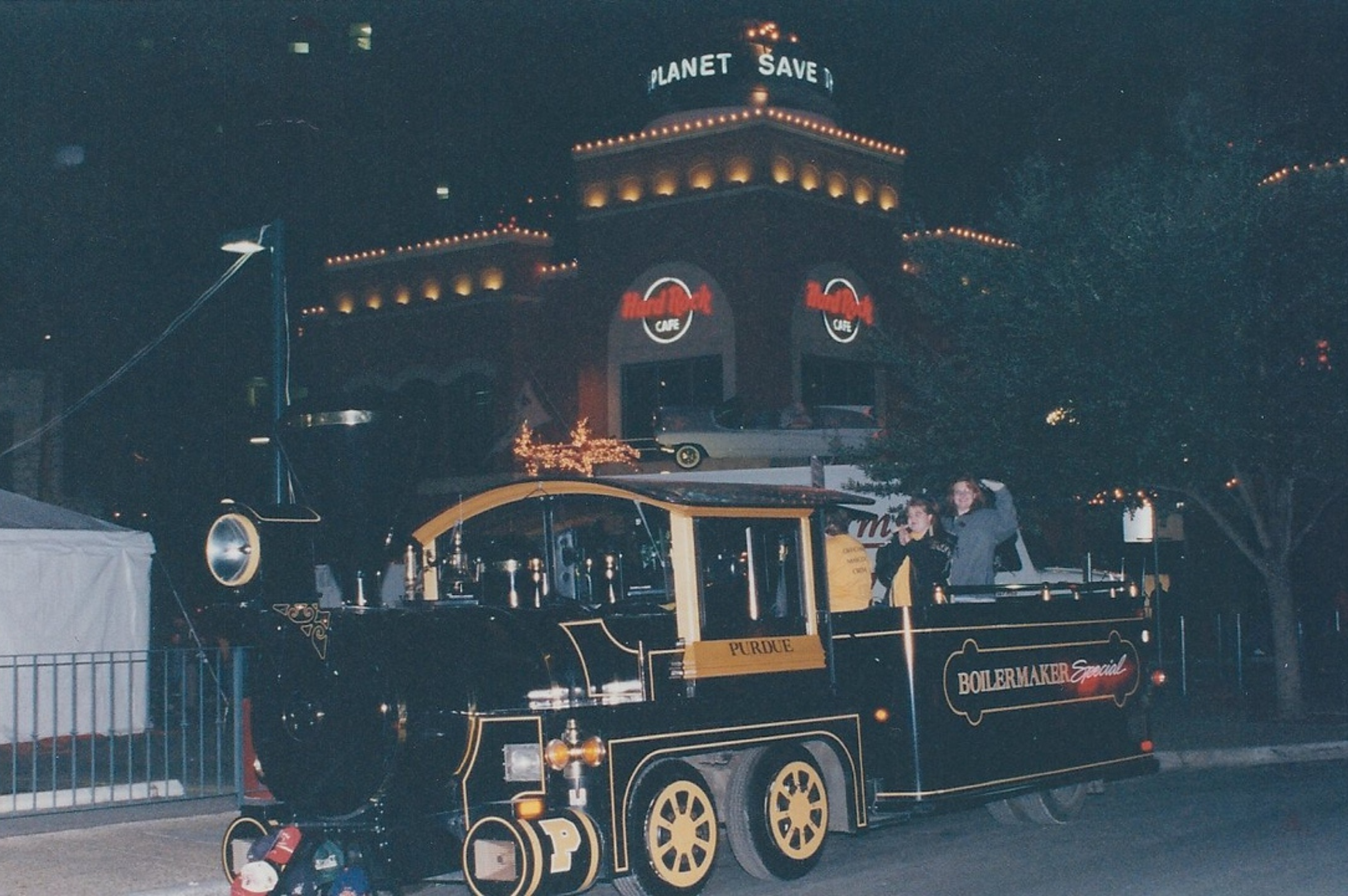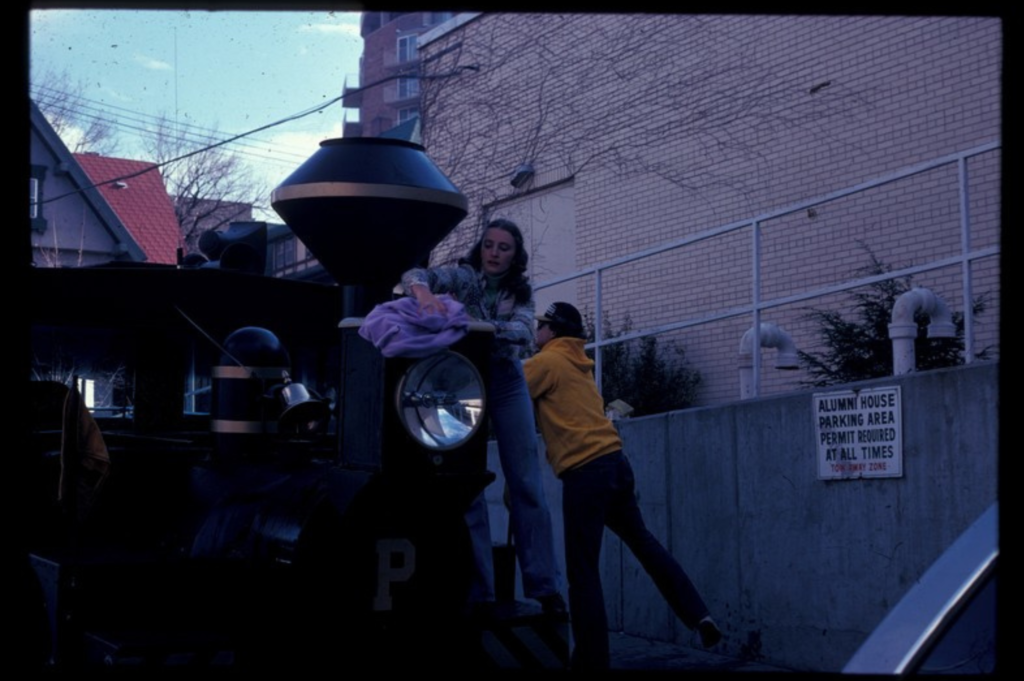A brief history of the purdue reamer club
The exact nature of the circumstances that lead to the organization of the Purdue Reamer Club are not well known. The history of the Purdue Reamers before 1922 is uncertain. There are only stories, rumors at best, which tell when the order was initially formed.
In the early part of the 20th century, University housing for male students was at a premium. Purdue Hall, built to house those lucky few who were nominated by their home counties to go to Purdue tuition free, was unavailable to the regular student. Ladies Hall, built in 1874, was only for the few female students enrolled at that time. The men had only two other choices for housing.
The first choice was to join one of the fraternities, which was a relatively new idea on campus. However, many of the men considered fraternities to be childish because of the secret ceremonies, handshakes, etc. These men opted for the only other choice available, living off campus. As most of the vacancies for student were across the Wabash River in Lafayette, transportation was a problem. Also, the potential for meeting new friends was limited, due to being isolated. At best, a student would have a few close friends caught in the same situation.
Since the Greeks were more organized, and they knew more people, they easily controlled the extracurricular activities. They were also the major leaders in larger activities, such as the Debris, the Exponent, Prom, and the Military Ball. Even though the student body decided these offices, the independents offered only token resistance.
In the spring of 1922, it became apparent that the Greeks were becoming divided among themselves in their quest to get their respective candidates on the election tickets. C.C. Reeder, an independent student, saw the potential to get non-Greeks elected, due to the Greek division. He farmed a group of off campus students, known as The Unorganized Student Association. This was an attempt to further divide the Greeks, so as to elect independents. Unfortunately, the group, at best, lived up to its name.
Reeder returned in the fall with a new approach to the same idea, and the Purdue Independent Association (PIA) was formed. The PIA fared better than its ancestor, remaining active until the mid-1950s. With time the PIA became more and more active. Thus, the members’ interest became more diversified in the quest to find new ways to help their fellow students and help the University. The Greeks had formed the Gimlets club to increase the school spirit among fraternity men. In September of 1922, a group of sports-minded individuals met to consider the possibility of furthering the interest of non-fraternity men in both varsity and intramural sports. They concluded that an organization similar to the Gimlets would be best.

F’23 Centennial Lion Sing

2001 Rose Bowl

F’78
The group’s first constitution called for the formation of the Reamer Club. The name, Reamer, was selected because the PIA felt the ‘Reamers would smooth out the holes the Gimlets made’. In other words, they would finish the tasks that the Gimlets undertook. The Dean of Men refused to recognize the club, because:
1. It was an organization within an organization, the PIA, and
he feared that the primary purpose for its existence was to rival the Gimlets
2. He concluded that the Dean’s office needed more control over the proposed club.
The constitution of the club was finally approved in October of 1923, thus establishing the Purdue Reamer Club. The constitution called for a group separate from the PIA, and that the group was to obtain the good will and cooperation of all groups. It is said that the constitution was drawn up under really difficult circumstances. Even with the revisions to the constitution, the purpose of the club was sketchy, at best.
Because of the relative inactivity of the club, the Reamers were looking for a reason for their existence as an outstanding group of men, instead of “just another honorary society”. A new constitution was adopted on June 2, 1926. It was approved by President Pittinger, Vice President O’Meara, and Secretary Payne. Dean M.L. Fisher spoke at the first initiation, conducted after the adoption of the new constitution. The club carried on various spirit raising activities on campus from that point on.
The club was still carrying on its good work in the years from 1932 – 1937, and it was during these years that the Reamer club started on one of its most outstanding pieces of work for the promulgation of Purdue traditions. In Spring of 1939, a sophomore pharmacy student, Israel Selkowitz, had an idea. He suggested that Purdue have an official mascot, something symbolic of a school rich in engineering heritage. This idea was developed and carried on until the culmination of efforts took place on September 11, 1940, when the Boilermaker Special I was presented to the university. The Purdue Reamer Club was appointed caretakers of the mascot at that time, and is still carrying out these duties. The BMS II was born in mid-1953, with a trailer added in 1956. At this time, work was done to acquire BMS III, which was obtained as a donation from General Motors in October of 1960.
Moving into the future, the club is now the caretaker of the newest Boilermaker Specials: The BMS VII and Xtra Special VIII. The club supports Purdue sports teams by sponsoring scholarships and awards and cheering loudly at athletic events. Club members drive the trains to athletic events including home and away football games, and home basketball and volleyball games, among various other on-and-off campus events. Outside the university, the club contributes to the local community through philanthropic events. As a whole, the Reamer Club is a group of highly dedicated and spirited students devoted to bettering Purdue University.

